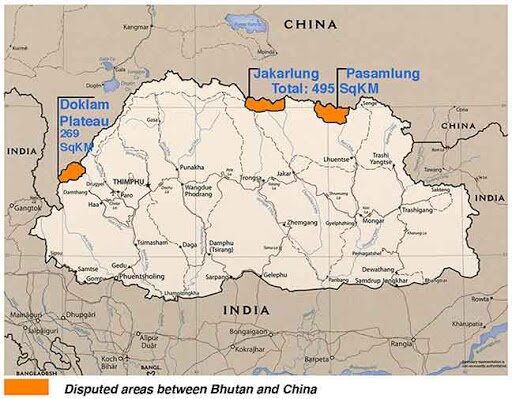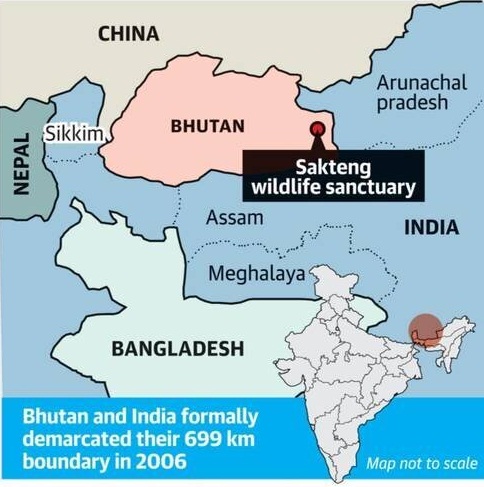China Proposes Territory Swap with Bhutan | 22 Jul 2020
Why in News
Recently, China has offered Bhutan a “package solution” to its boundary dispute. Although the package solution is not specified, it may be seen as a revival of the 1996 proposal by China for a territory swap.
Key Points
- Territory Swap:

- In 1996, China wanted to exchange the valleys to the north of Bhutan (an area of 495 square kilometres), with the pasture land to the west (including Doklam), totalling 269 square kilometres.
- The deal would have benefited Bhutan by giving it the larger chunk of land, and resolving its tensions with China.
- However it was a big worry for India, as the Doklam swap would have given China access to the strategically sensitive “chicken neck” of the Siliguri corridor.
- Repeated Claim Over Sakteng:

- China also repeated its claim on Bhutan’s eastern boundary at Sakteng.
- Earlier, China has made the claim over Sakteng at an online meeting of the 58th Global Environment Facility (GEF) Council, while unsuccessfully objecting to the funding request to develop the Sakteng Wildlife Sanctuary project in eastern Bhutan.
- China claims that the boundary between China and Bhutan has never been delimited. It has had disputes over the eastern, central and western sectors of Bhutan.
- However, Bhutan outrightly rejected the claim made by China by saying that Sakteng is an integral and sovereign territory of Bhutan.
- According to Bhutan, China and Bhutan have a dispute in only two sectors of the border, one in the north (central) – Pasamlung and Jakarlung, and second in the west – Doklam.
- There has been no mention of eastern Bhutan, where Sakteng is based, in 24 previous rounds of boundary negotiations held between the two countries between 1984 and 2016.
- Reason Behind the New Offer:
- The aim may be to pressure Bhutan into concluding a deal quickly on terms on offer, otherwise the claims may keep increasing.
- The similar offer was made to India on Arunachal Pradesh, which subsequently expanded to include a Chinese claim on Tawang in 1985.
- Concerns for India:
- In 2017 China had intruded into Doklam plateau, which is claimed by Bhutan, leading to a standoff between Indian and Chinese Armies.
- Even after the India-Bhutan Friendship Treaty of 2007, Indian military is virtually responsible for protecting Bhutan from the kind of external threat that the Chinese military poses.
- According to the India-Bhutan Friendship Treaty of 1949, Bhutan allowed India to "guide" its foreign policy and defence affairs.
- However, the 1949 treaty was amended in 2007 to respect the sensitivities of Bhutan regarding its sovereignty.
- Under the India-Bhutan Friendship Treaty of 2007, the two sides have agreed to cooperate closely with each other on issues relating to their national interests.
- Neither Government shall allow the use of its territory for activities harmful to the national security and interest of the other.
- China has said that a third party should not point fingers in the China-Bhutan border issue, which is an apparent reference to India.
Way Forward
Bhutan has protested against Chinese territorial claims in eastern Bhutan and said that it will also contest in future if China refers to the territory as disputed. Safety of Border from China is a concern for both India and Bhutan. Therefore, both sides need to work together on this issue.
